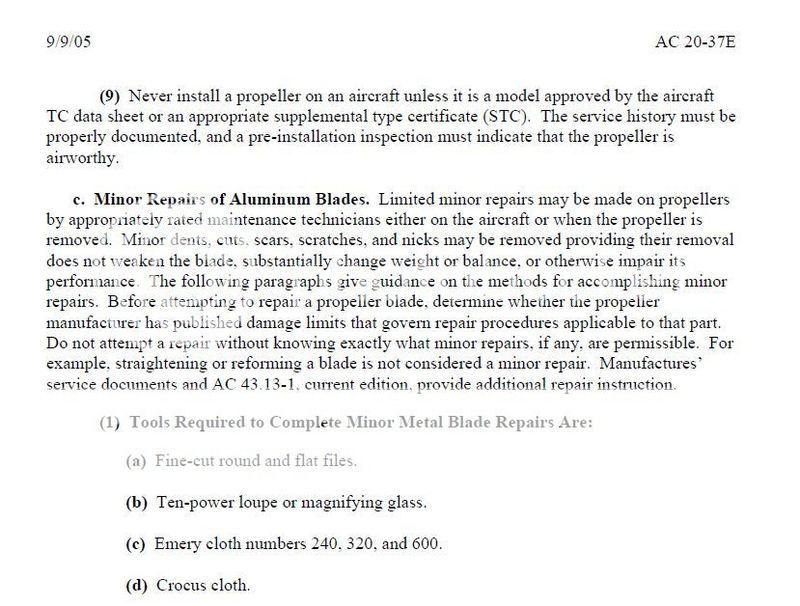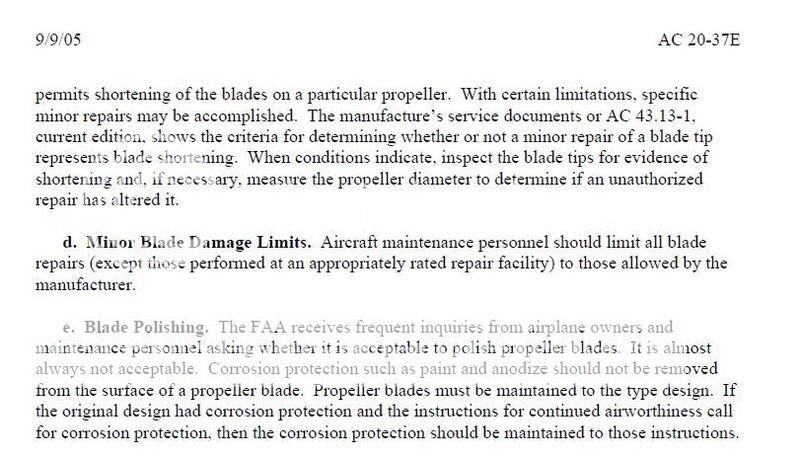Tom-D
Taxi to Parking
- Joined
- Feb 23, 2005
- Messages
- 34,740
- Display Name
Display name:
Tom-D
OBTW we in the Field as A&Ps are not allowed to make repairs to props, all we are allowed to do is minor maintenance. So when we don't make repairs, we don't replace the finish.
Blending leading edge damage isn't a repair?
How do you explain the above STC which is clearly for an alteration? Can you alter the prop?
You can always apply any STC that applies. That's a completely different issue than polishing a prop.
Repairing minor Discrepancies is of course maintenance and requires a return to service entry in the proper log, But that isn't the issue I presented to Ron, he is contending that when you blend a prop you must return the finish to the original condition. That is simply untrue.

 I'm wondering where that came from.
I'm wondering where that came from. Nothing came of said ramp inspection. You can imagine their wide open eyes when they stumbled across a high school kid dinking around a doggy looking Cessna 150 all alone and only a student certificate.
Nothing came of said ramp inspection. You can imagine their wide open eyes when they stumbled across a high school kid dinking around a doggy looking Cessna 150 all alone and only a student certificate. 





